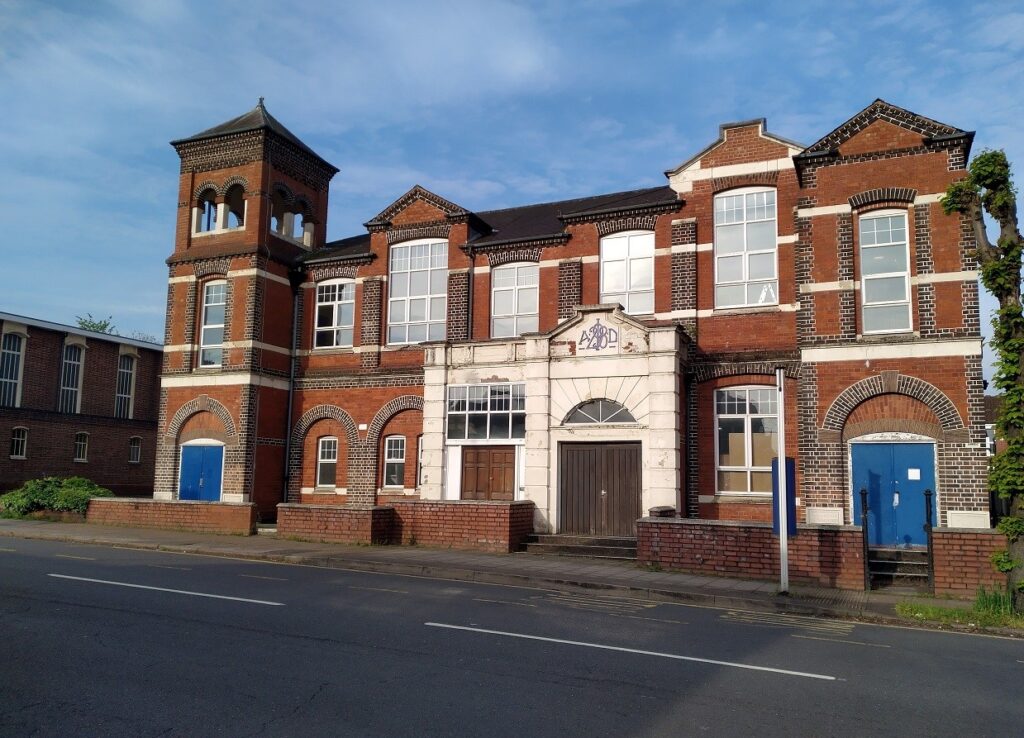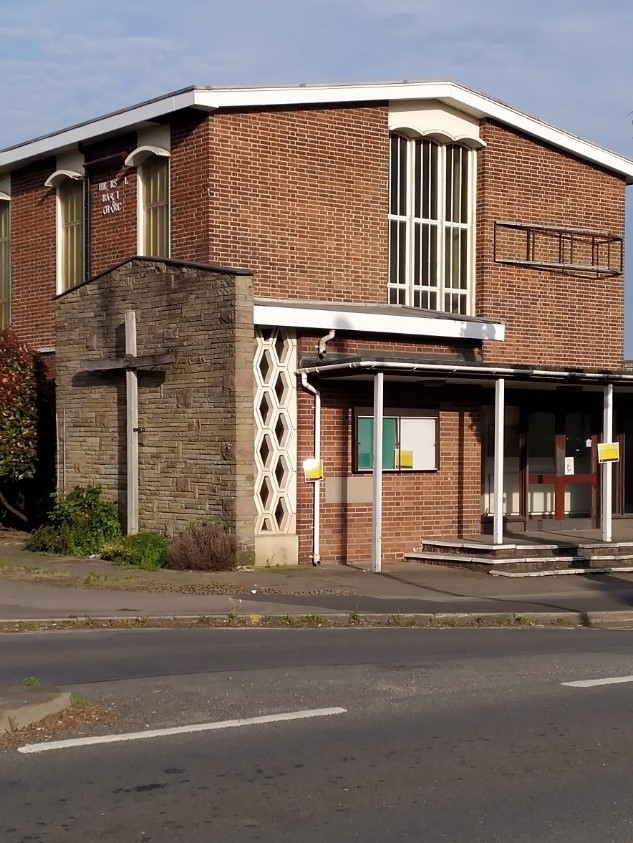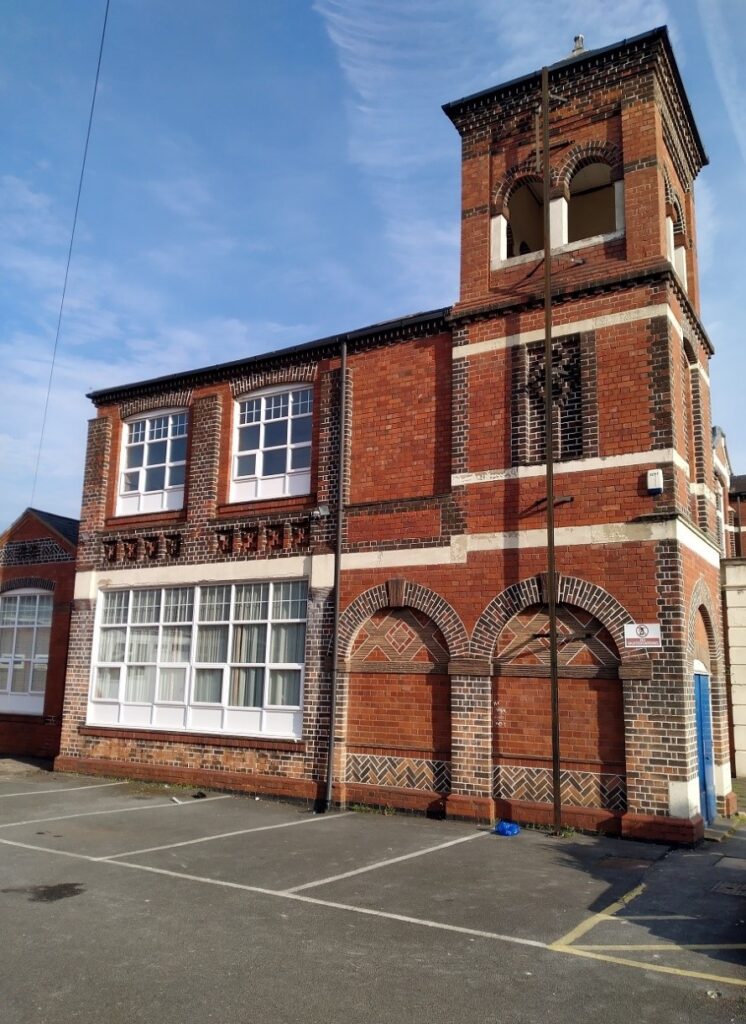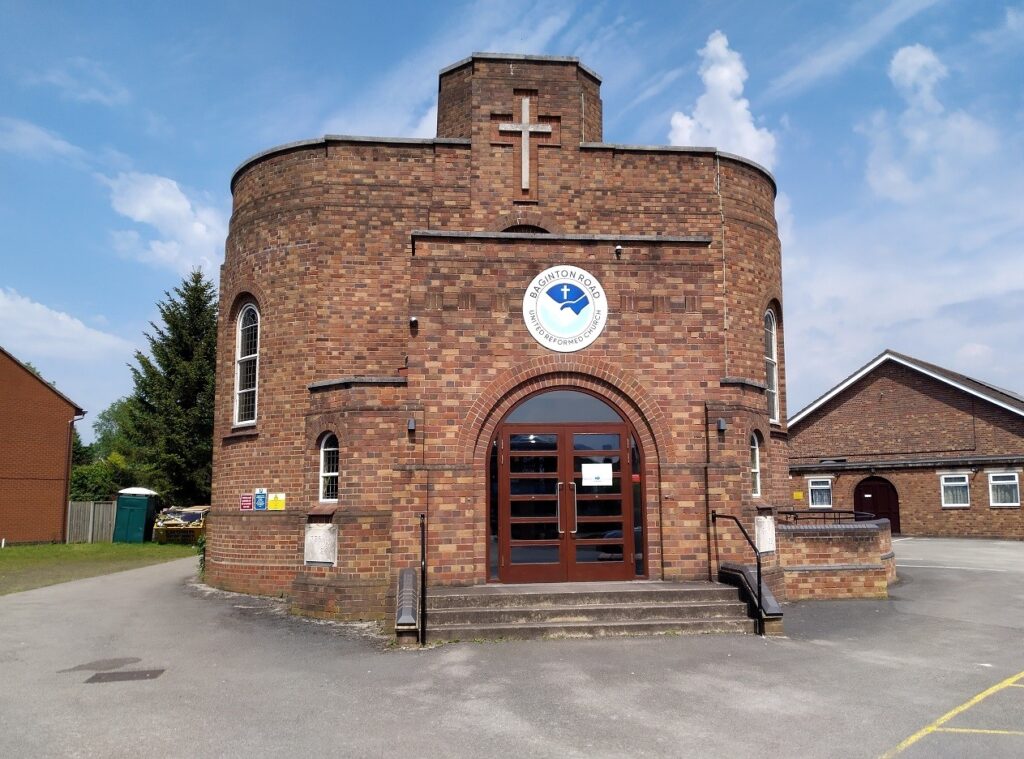The Earlsdon Echo has recently reported some positive news about the future of Hearsall Baptist Church. ”The Trustees of the recently closed Hearsall Baptist Church have made the following announcement today:
‘…the Trustees are now in a position to announce that the sale of the premises in Queensland Avenue was finalized on Tuesday 30 April and the keys for the premises have been officially handed to the new owners.
‘The new owners are Genesis International Christian Centre who worship under the name MARPE Assembly of All Nations, who currently meet in a rented building in the Rowleys Green area of the city.
‘Both groups have a strong feeling that this sale was directed by God, as although we had been looking to redevelop the site for many years, we had always come across obstacles preventing our progress and MARPE had experienced the same thing, wanting to purchase a permanent home for many years but always being unable to do so until now.’”

Historian and CovSoc Committee member David Porter tells us about the history of this interesting building and the architect who designed it. David writes……
The Hearsall Baptist Church has been very much in the news for some months now, and following the final service on 31st March it is wonderful to learn that the site is to continue its focus as a place of worship and community service under the aegis of the MARPE Assembly of All Nations, who are keen to maintain some of the traditions associated with the buildings on Queensland Avenue.
From a heritage perspective, the Church is of great interest as its origins can be traced back as far as 1860, when for the first time a group of Baptists based in Chapelfields started to worship together. This initiative led to the construction of a meeting room and an adjoining Sunday School together with some classrooms on Lord Street, which went on to be formally adopted by Queens Road Baptist Church.
In the period leading up to the First World War, this Sunday School building was felt to be no longer fit for purpose and so the decision was taken to secure a new site with the intention of erecting new, larger premises. To this end, the current Queensland Avenue plot was purchased in 1915, and new Sunday School buildings were constructed by local contractors W. A. Player & Son of Earlsdon Avenue following a design by the local architect G. A. Steane — of whom see more below. No doubt in part due to the difficulties caused by the First World War, work on the new building did not actually start until 1927, with the Sunday School finally opening on Saturday 22nd 1928. According to an article in the Coventry Herald, a large party including the Rev Dr Townley Lord – pastor at Queens Road Baptist Church – as well as other ministers and former members of the original Sunday School were on hand to witness the official opening of the site by Mr Sydney Peirson. He was Superintendent of the Lord Street Sunday School and Treasurer of the scheme responsible for the construction of the new Sunday School, in recognition of which roles the new owners have promised that one of the rooms on the site will continue to bear his name.
With a nod to the future, according to the Coventry Herald the largest room in the new Sunday School building was designed to allow also for religious services “until circumstances permit of the building of a church on the remainder of the land adjoining the present structure.” This arrangement was formally recognised some ten years later, when the Sunday School building was elevated to the status of Hearsall Baptist Church. In the years following the Second World War, the number of worshippers together with the range of Sunday School activities caused the church authorities to revisit their intention to commission a purpose-built church next to the Sunday School, in furtherance of which in 1959 the Coventry-based architectural partnership of C. F. Redgrave and L. A. Clarke drew up plans, with A. G. Gale as the builders completing construction of the new modernist church in 1962.

However, no account of the history of Hearsall Baptist Church would be complete without mention of the illuminated star which has long appeared atop the three-storey tower at Christmas. The appearance of this much-loved star – which tradition the new owners have agreed to uphold – first came into being in 1952 thanks to the initiative of Bernard Baker, who fashioned the star from some discarded neon tubes. To facilitate the installation of the star, a special runway was added in 1961, and thanks to subsequent renovations to the tower as well as its electrical componentry, the star has continued to appear over the decades. Pleasingly, in keeping with their commitment to maintain the Church’s traditions, the new owners have undertaken to continue the practice of installing the star on the tower, and so we can look forward again to enjoying this local feature over the festive period in years to come.

George Arthur Steane
The Sunday School buildings are at the time of writing the subject of a submission in support of local listing, partly because of their striking Italian-influenced styling, but also because of the involvement of the buildings’ Earlsdon-based architect, whose father and uncle were both architects as described in a recent Coventry Society article.
George Arthur Steane was involved in a number of projects across the city, a good number of which sad to say fell victim to bombing during the Second World War. To mention a few examples, Steane designed a library for Longford on Windmill Road which opened in 1931 but like the city-centre John Gulson Library it was badly damaged in the bombing of 14th November 1940. Another very different project was a large factory built in 1934 for the Coventry Swaging company on Fletchamstead Highway, which building again is no longer with us. More positively, to replace the original city centre building lost to the bombing, the new West Orchards Congregational Chapel was opened in 1952 on the corner of junction of the Chesils and Baginton Road in Stivichall. Albeit very different in design to the Hearsall Baptist Sunday School complex, this building – now named the Baginton Road United Reformed Church – was also the handiwork of George Arthur Steane.

All photos © David Porter
